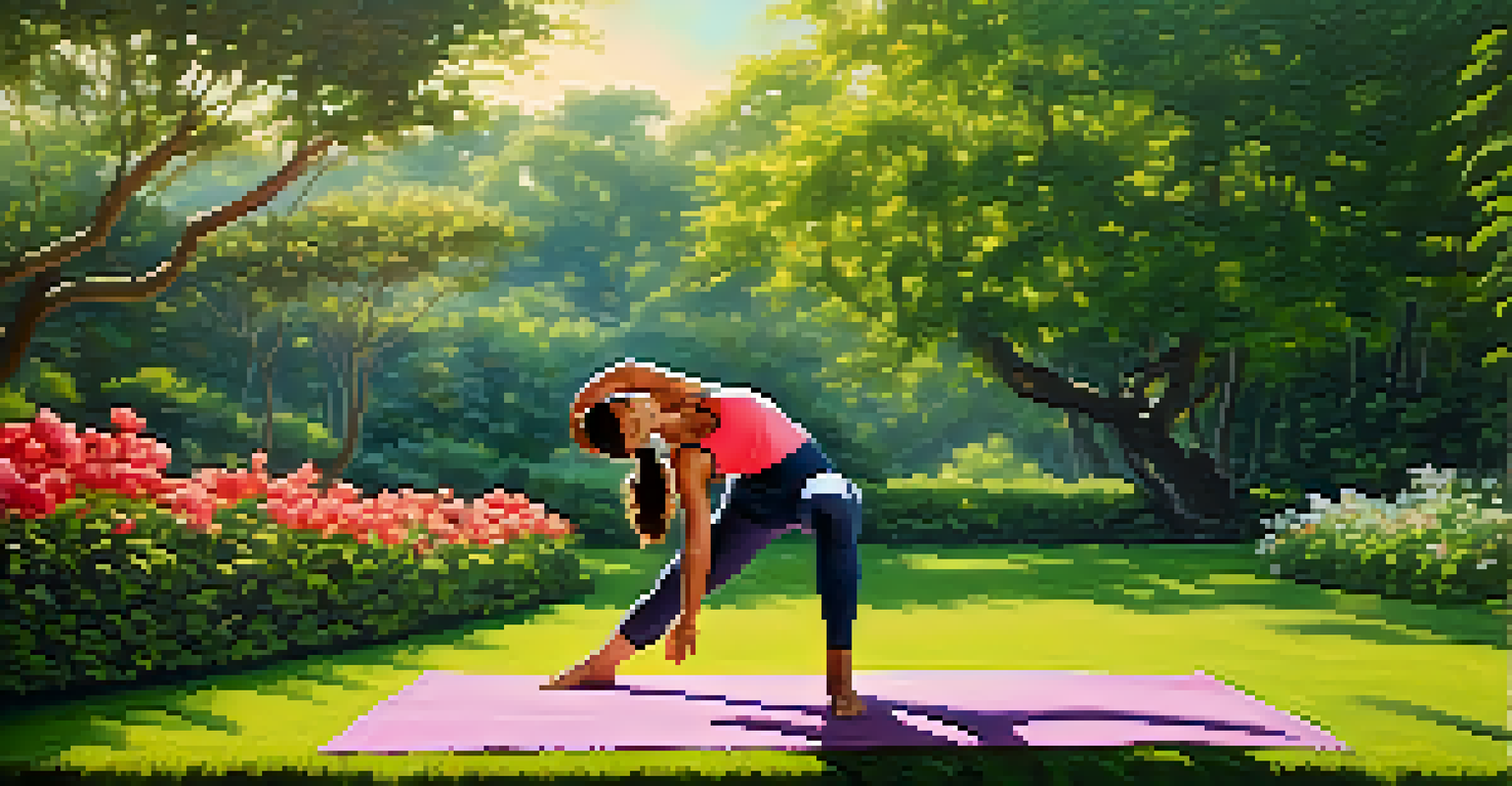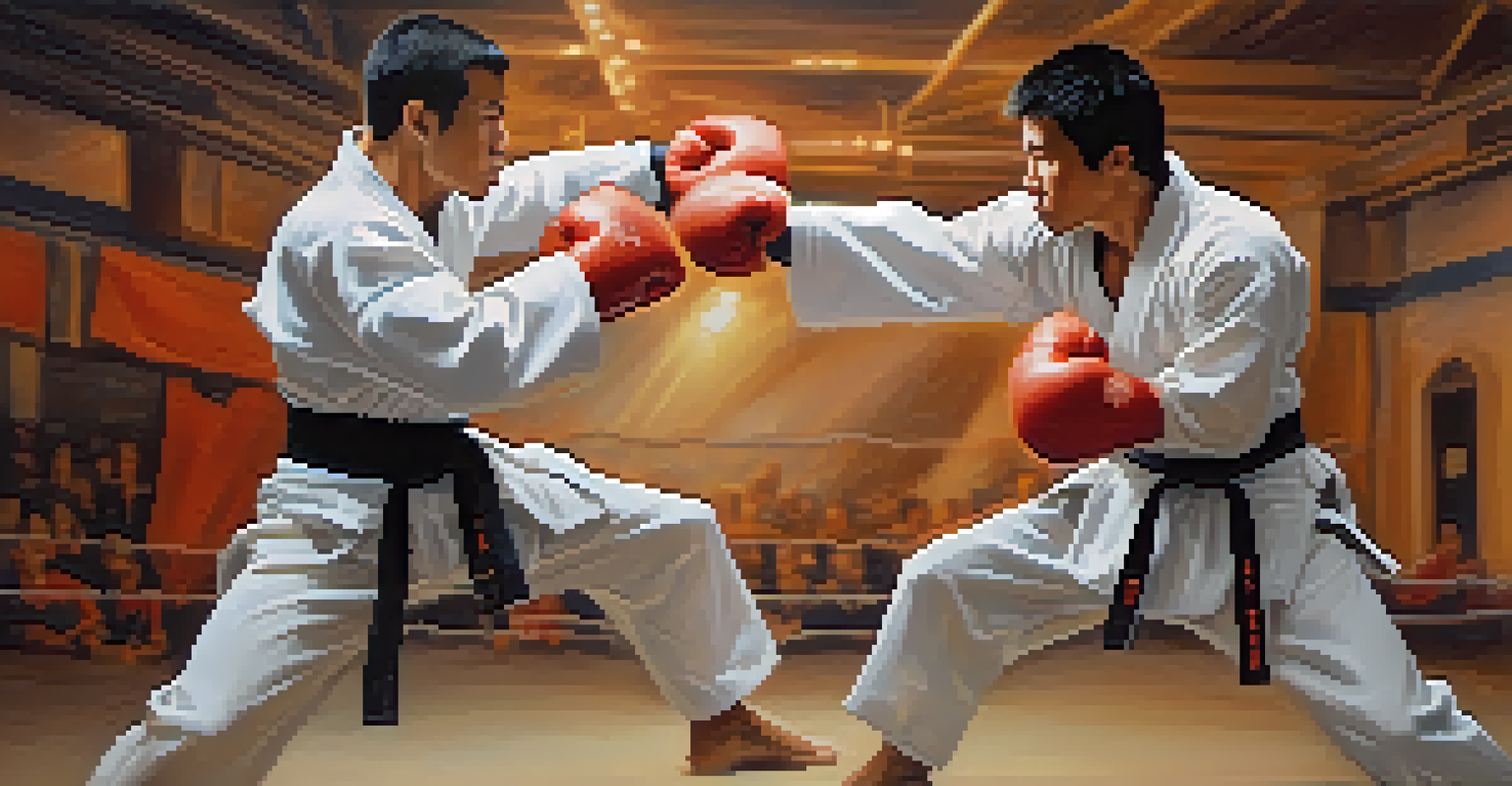The Role of Flexibility in Martial Arts Performance and Safety

Introduction: Why Flexibility Matters in Martial Arts
Flexibility is more than just a physical trait; it's a crucial component of martial arts performance. In disciplines like karate, judo, and taekwondo, being flexible can significantly influence your ability to execute techniques accurately. For martial artists, enhanced flexibility leads to improved kicking, striking, and grappling skills.
Flexibility is the key to stability.
Moreover, flexibility plays a vital role in preventing injuries. When your muscles and joints are flexible, they can absorb the impact of sudden movements more effectively. This not only protects against common injuries but also allows for a greater range of motion, which is essential in combat situations.
As we delve deeper into the role of flexibility, you'll see how it intertwines with various aspects of martial arts training, from warm-ups to actual sparring. Understanding this connection can help martial artists of all levels enhance their skills and maintain their health.
Enhancing Performance through Increased Flexibility
In martial arts, flexibility directly impacts performance by allowing for more fluid and dynamic movements. Think of a rubber band; the more you stretch it, the more versatile it becomes. Similarly, flexible muscles enable martial artists to execute complex techniques and transitions with ease.

For instance, a high kick requires not only strength but also a significant degree of flexibility in the hips and hamstrings. The more flexible you are, the higher and more controlled your kick will be, giving you a competitive edge. This can make a noticeable difference in both practice and competition settings.
Flexibility Enhances Martial Arts Skills
Improving flexibility allows martial artists to execute techniques more fluidly and effectively, providing a competitive edge.
Furthermore, flexibility allows martial artists to adapt their movements in response to an opponent's actions. When you can move freely in various directions, you can evade attacks and counter with agility, enhancing your overall effectiveness in combat.
The Connection between Flexibility and Injury Prevention
One of the most significant benefits of flexibility in martial arts is its role in injury prevention. When muscles are tight, they are more susceptible to strains and tears during intense activities. Regular stretching routines can help keep muscles pliable and resilient, reducing the risk of injuries.
The more flexible you are, the more options you have.
Injuries can occur in many forms, from sprains to more serious muscle damage. A flexible body can better absorb shock and adapt to sudden movements, making it less likely to sustain injuries during training or sparring sessions. This protective aspect of flexibility is essential for long-term participation in martial arts.
Additionally, flexibility training can improve your body awareness, helping you recognize your limits and avoid pushing yourself too hard. This awareness is crucial in martial arts, where understanding your physical boundaries can prevent overexertion and related injuries.
Incorporating Flexibility Training into Your Routine
To reap the benefits of flexibility, martial artists should incorporate specific stretching routines into their training. Dynamic stretching, which involves moving parts of your body through their full range of motion, is particularly effective before workouts. This prepares your muscles for the demands of training.
Static stretching, on the other hand, is best suited for post-training sessions. Holding stretches for 15-30 seconds can help lengthen muscles and improve overall flexibility. Combining both types of stretching ensures that martial artists are primed for performance and recovering effectively afterward.
Flexibility Reduces Injury Risks
Regular flexibility training helps protect against injuries by keeping muscles pliable and improving body awareness.
Moreover, activities like yoga or Pilates can complement traditional martial arts training by enhancing flexibility while promoting mindfulness and body control. Finding a balance between martial arts and flexibility-focused practices can lead to significant improvements in overall performance.
Common Myths about Flexibility in Martial Arts
Despite its importance, there are several myths surrounding flexibility in martial arts. One common misconception is that flexibility is solely a genetic trait. While genetics do play a role, anyone can improve their flexibility with consistent training and effort.
Another myth is that flexibility training is time-consuming and unimportant compared to strength training. In reality, dedicating just a few minutes each day to stretching can yield significant results without detracting from strength training or skill development. Flexibility and strength training can coexist harmoniously.
Finally, some believe that flexibility is only necessary for certain martial arts styles. In truth, all martial arts benefit from flexibility, as it enhances movement efficiency and reduces injury risks, regardless of the specific discipline.
The Role of Flexibility in Sparring and Competition
During sparring and competitions, flexibility can be a game-changer. A flexible martial artist can move fluidly, evade attacks, and counter effectively, making them a formidable opponent. This adaptability can often lead to better performance in pressure situations.
For example, being able to perform a quick, high kick while maintaining balance can catch an opponent off guard. The element of surprise can be crucial in martial arts, and flexibility allows for unpredictable movements that can turn the tide of a match.
Incorporate Flexibility Training Regularly
Incorporating dynamic and static stretching into training routines can significantly enhance performance and recovery.
Additionally, flexibility aids in recovery between rounds or matches. A martial artist who is flexible can maintain a higher level of performance throughout a series of bouts, leading to less fatigue and better outcomes in competitions.
Conclusion: Embrace Flexibility for Success in Martial Arts
In conclusion, flexibility plays a pivotal role in enhancing both performance and safety in martial arts. By committing to a regular flexibility training routine, martial artists can improve their skills, reduce injury risks, and enhance their overall experience in the sport. The benefits extend beyond the dojo, contributing to a healthier lifestyle.
Remember that flexibility is not just about achieving the perfect split or high kick; it's about improving your overall movement quality and body awareness. By embracing flexibility, you can enjoy the journey of martial arts while maximizing your potential.

So, whether you're a seasoned practitioner or just starting, make flexibility a core part of your training regimen. The rewards will not only be evident in your performance but also in your longevity and enjoyment of martial arts.